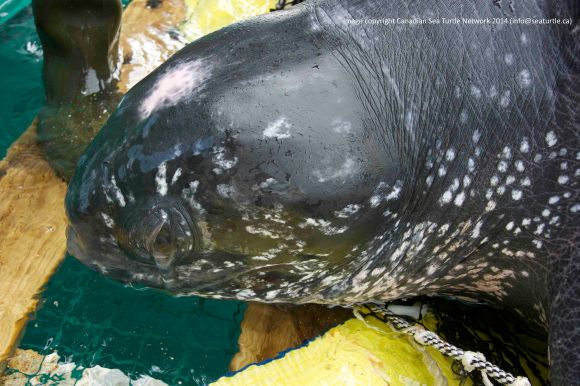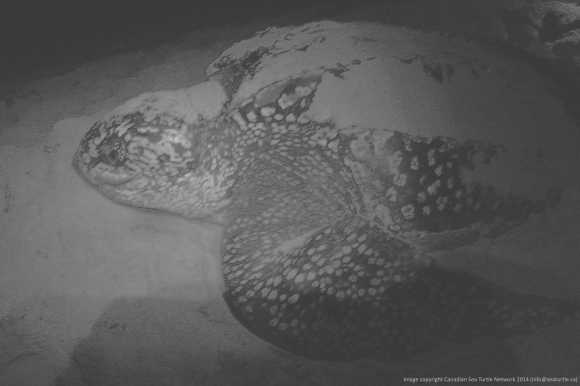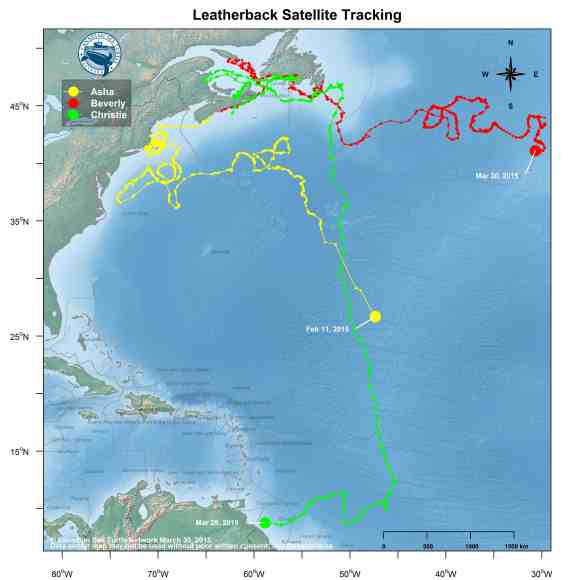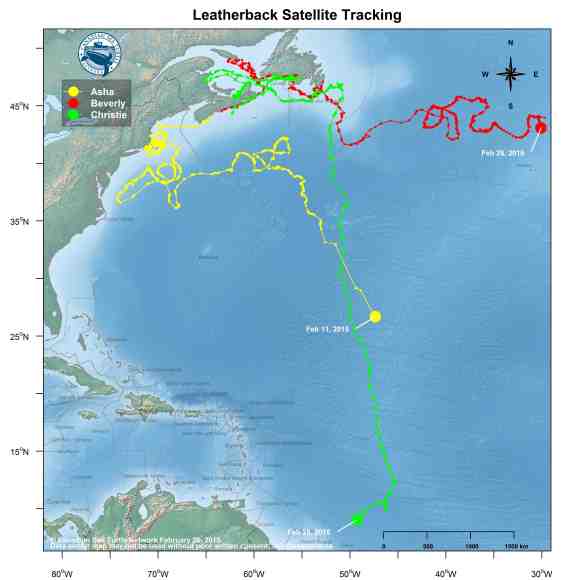
Christie nesting on Matura Beach, Trinidad, wearing her new satellite transmitter.
Photo courtesy of Nature Seekers (natureseekers.org).
Christie is BACK!
The turtle phone rang at 12:30 this morning.
It was Kyle, from the Nature Seekers in Trinidad.
“Unfortunately, we have good news and bad news,” he said. “The good news is Christie is alive and well. The bad news, she doesn’t have the transmitter attached.”
Francis, another one of the Nature Seekers, had been finishing up an ecotour with a crowd on Matura beach when he walked by a leatherback hauling up on the sand. One of the tourists asked how much bigger she was then the other turtle they had just seen nest. Francis went to check her out when he noticed she had a distinctive, transmitter-sized patch on the centre of the carapace.
This patch is one of the things the beach crews in Trinidad were looking for. We have learned over the years, that when a transmitter comes off a turtle, the skin directly under it is light in colour. Within a few weeks, the skin will darken again.
Francis raced to check the turtle’s flipper tags and radioed Kyle.
“He read the numbers over the radio for me and BAM! It was Christie. That’s when we sprang into action,” said Kyle.
And Christie looked good. The transmitter had clearly been knocked off—likely during mating.
But that is just the start.
Some of our team went down to Trinidad two weeks ago to train members of the Nature Seekers in safely attaching satellite transmitters to leatherbacks. We wanted them to put transmitters on Canadian turtles so we could get the first leatherback satellite tracks back to Canada from the nesting beach.
Kyle, Devin and Francis put one of those satellite transmitters on Christie.
Our goal is to watch her swim back home to us again.
When something like this happens it is hard to explain how slim the chances of it are. It’s miraculous. We are thrilled. And so proud of our friends at Matura. What a team!

Kyle, Devin and Francis with Christie. Photo courtesy of Nature Seekers (natureseekers.org).
















